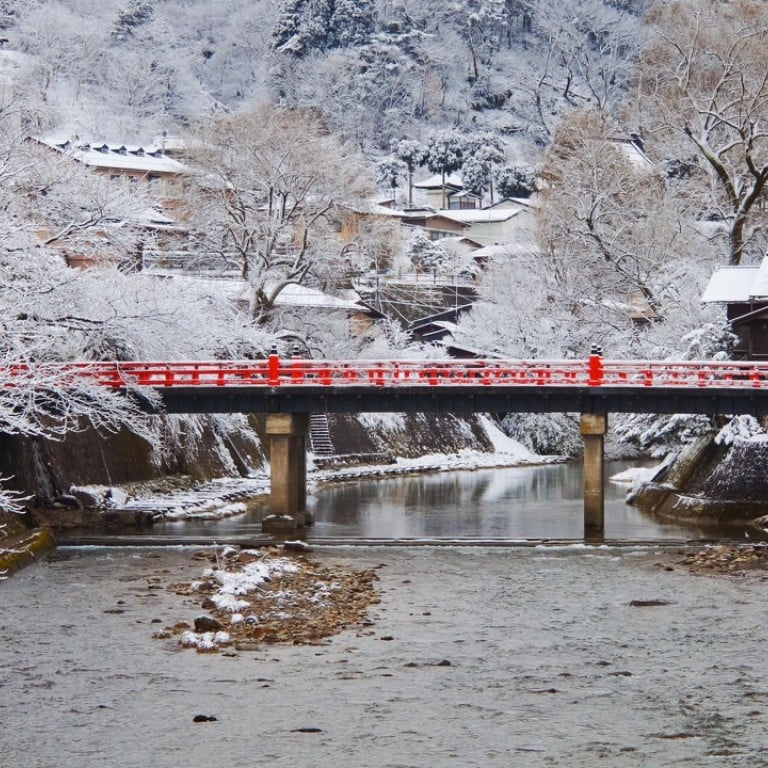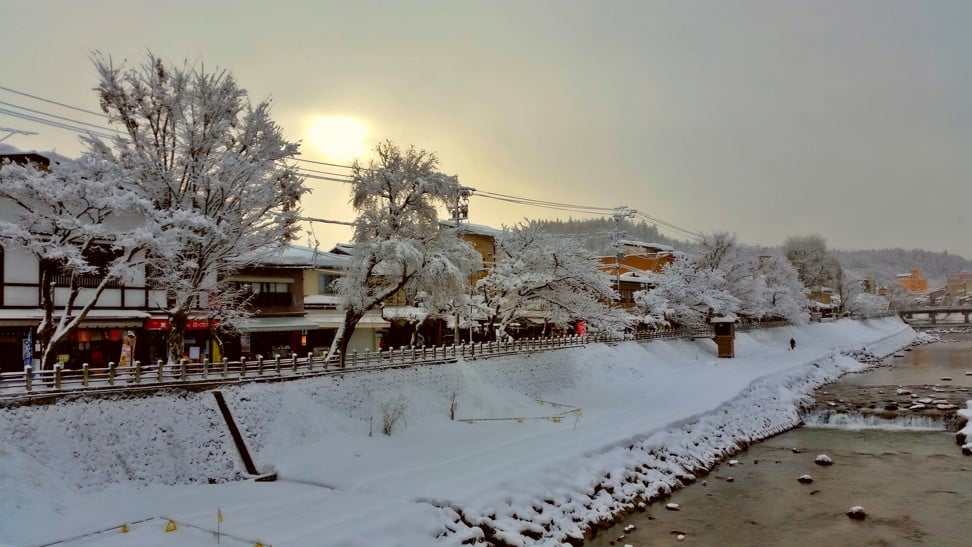
Where to enjoy last-minute snow in Japan before the thaw sets in
From a World Heritage-listed alpine town a few hours from Osaka, to Nagano’s Olympic ski slopes, to picturesque northern Hokkaido, a winter getaway will reward visitors keen for white landscapes before spring does its thing
By mid-March, most of Japan’s snowy landscapes begin to recede and fade as spring kicks in but there are pockets where you can still find snow until April, and even May. Here are five locations across Japan offering a last glimpse of winter’s white blanket.

Shirakawa-go, Gifu
Unesco World Heritage-listed Shirakawa-go is an alpine town famous for houses built with distinctive thatched ‘Gassho-zukuri’ roofs, literally meaning ‘hands in prayers’ – named after their steep structure. These sturdy houses have withstood the test of winters and heavy snow, some for over 250 years, and are popular as minshuku, or Japanese bed and breakfasts, throughout the seasons.
Five of the best Asian countries for skiing, recommended resorts and our top pick for this winter
Although spring brings warmth, Shirakawa-go usually has snowy terrain until early May.
Visit Shirakawago no Yu, the only onsen in town, for a restorative soak, or stay the night at a minshuku, and enjoy a rustic meal in the dining room of one of these historic abodes.
Getting there: Fly to Kansai International Airport, Osaka, then get a Japan Rail (JR) Express from Kansai to Kanazawa (2hr 40m) before hopping on the bus to Shirakawa-go (1hr 25m).
Biei, Hokkaido
Biei is a small settlement famous for its Shirogane blue pond, which takes on an azure tinge in spring. Nearby is the Shirahige Falls that remains frozen most of winter. Towards the end of April, both pond and waterfall begin to thaw, unlocking their blue from natural minerals dissolved in the water.
Biei is a picturesque spot 30 minutes drive from Asahikawa, Hokkaido’s second largest city after Sapporo. The views here are delineated by the mighty peaks of the Daisetsuzan National Park, which remain snow-capped well into June, making it a magnet for photographers.
There are only a handful of onsen accommodation options and restaurants scattered around Shirogane, so a day trip from Asahikawa is easiest.
Getting there: Biei is located between Asahikawa a nd Furano and may be reached via self-drives or scheduled buses from Asahikawa, Hokkaido.

Otaru, Hokkaido
Hokkaido’s most famous canal, with its restored warehouses and snowy paths, is a perfect spot for wintry strolls. The constant presence of seagulls and painters creates a photogenic backdrop, even in the depths of winter.
Whimsically shaped glass ornaments are a noted craft from this small port town, as are the cheesecakes and soft-serve ice creams Hokkaido is famous for. Snow and crowds are not expected to disperse until the end of April.
Ski touring in Japan: explore the wilderness around Hakuba Valley, an ideal training ground for beginners
Live seafood such as abalone and king crabs are the culinary attractions in Otaru, and Sankaku market is where seafood lovers converge from as early as 8am. Alternatively, try fried chicken from local chain Naruto, which serves it with sushi.
A short distance from the Otaru canal is the preserved merchant street of Sakaimachidori, which has many cafes, restaurants and three museums.
Getting there: Fly to Hokkaido (Sapporo), then take the JR Hakodate main line to Otaru.
Hakuba, Nagano
Relatively low-key just a few years ago, Hakuba is now a thriving international ski town, thanks to its easy access from major Japanese cities and wide range of accommodation and restaurants. One of the main locations for the 1998 Nagano Winter Olympics, it has 135 lifts accessing more than 200 runs to cater to all levels of skiers and snowboarders.
Japan for non-skiers: Nagano in winter offers chills and thrills
There are also several cross-country ski courses traversing the remote ridges of Hakuba valley. Many ski resorts in Japan close in March but here the season typically extends till the end of April – when the slopes are not crowded.
There are plenty of restaurants and pubs, both Japanese and Western, around Hakuba village for après-ski indulgences. Hot springs are another attraction here, with onsen resorts such as Sierra Hakuba (sierrahakuba.com) offering indoor and outdoor baths.
Getting there: Hakuba can be reach from Tokyo via train or bus. There are scheduled buses from Tokyo’s Narita Airport.

Hida Takayama, Gifu
Its name means “high mountain”, and the quaint hamlet of Hida Takayama is visited for its seasonal beauty. Its scenery is best captured from the Kaji bridge across the Miyagawa River.
Flanked by willows and cherries dormant in the cold, these trees, along with most of the old town, are blanketed in snow from November till March. Highland weather is often unpredictable and spring can quickly retreat with a sudden blizzard well into April.
Stay in a local onsen hotel, such as Sumiyoshi Ryokan (sumiyoshi-ryokan.com) where you can soak in a hot spring bath with views to the river.
Visit the morning markets and pick up local produce like Hida apples and Hoba miso paste. Stroll the old town, where conserved buildings date from the Edo period, for local crafts and art. Indulge in a bowl of Hida beef ramen to keep the cold at bay.
Getting there: Takayama can be reached via JR Hida Limited Express trains from Nagoya station.

